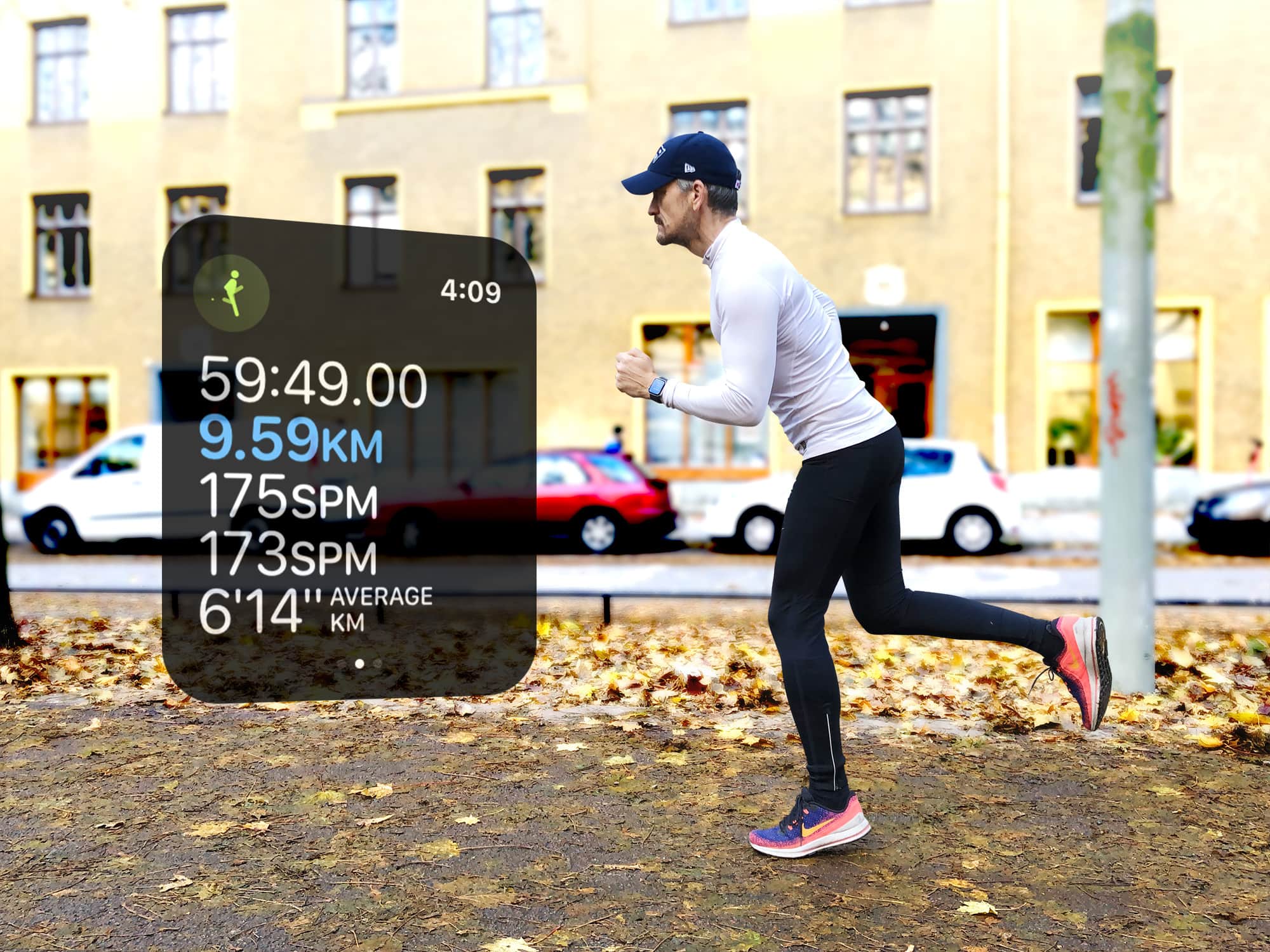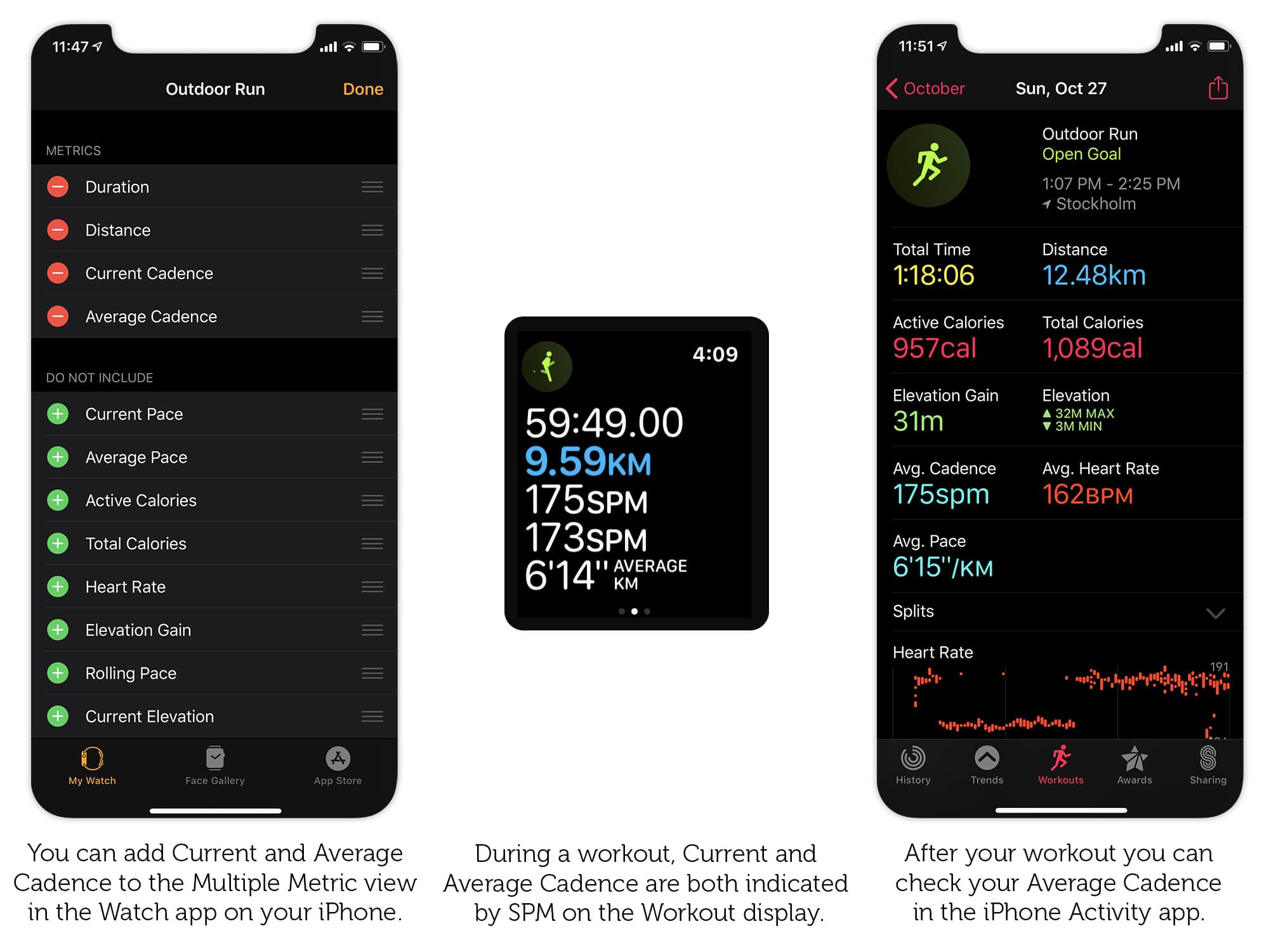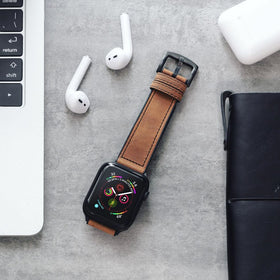How to use running cadence on Apple Watch

The Apple Watch running cadence setting arrived in watchOS 5, but if you didn’t notice, you’re not alone. It tends to get buried in the myriad stats Cupertino provides for runners. Plus, there’s a lot of confusion about what it actually means and whether it’s useful.
But when you understand what your running cadence is telling you, it can help make you run faster and reduce your risk of injury. So it’s definitely worth taking the time to get your head around it. Here’s our handy guide.
What is cadence?
Cyclists and swimmers always used cadence as a metric. But for runners, it was not so easy to monitor until gadgets like Apple Watch came along.
In cycling, cadence is all about how fast you turn the pedals, measured in revolutions per minute (RPM). (This metric is currently not supported by Apple Watch unless you use GymKit with a compatible cycling machine). Your RPM combined with your choice of gear determines how fast you go.
Swimming cadence is measured in strokes per minute: the number of times your arms and legs repeat the same motion through the water. This, in combination with other factors like body type and technique, will determine your pace.
Why is cadence important for runners?
How fast you run is the result of two factors: your stride length and your cadence. Stride length is the distance your foot travels with each step. Cadence is how frequently you take a step.
So, if you want to run faster, you have three options:
- Increase your cadence
- Increase your stride length
- A combination of 1 and 2.
Unfortunately, since you wear Apple Watch on your wrist instead of your ankle, it can’t measure your stride length. But thanks to the built-in accelerometer, it does detect the jolt every time your foot hits the ground. Apple Watch uses this to monitor your current and average cadences.
Apple Watch measures cadence in steps per minute (SPM), literally the number of times your foot hits the ground every minute while you run.
How to check running cadence on Apple Watch and iPhone
You can monitor your current and average cadences on Apple Watch while running. To do this, open the Watch app on your iPhone and go to Workout > Workout View > Multiple Metric > Outdoor Run > Edit. Then just tap on Current Cadence and Average Cadence to add them to the metrics list at the top. (Note: You can select a maximum of five metrics, so you might need to remove other metrics to make room.)
A bit confusingly, Apple Watch does not differentiate between current and average cadence on the Workout display. They are both just marked as SPM. So you must remember which order you placed them in. (You can reorder them in the Watch app on iPhone by tapping Edit and then dragging them).
If you prefer the Single Metric view, you can now switch back to it, and you’ll be able to scroll through the metrics one by one using the Digital Crown to check your cadence.
After a run, you can view your average cadence for the entire workout in the Activity app on your iPhone. Go to the Workout tab, select a running workout, and you’ll see it marked Avg. Cadence above the pace.

Photo: Graham Bower/Cult of Mac
Understanding your running cadence
Running cadence is a unique and personal metric. Everyone’s natural cadence is different, because everyone’s body is different. Taller people have longer legs, meaning they have a longer stride. This in turn means they would use a lower cadence to achieve the same pace as a shorter person.
Elite runners tend to average at around 180 SPM, but this varies widely, from around 150 to 200 SPM. There was a time when some running coaches believed 180 SPM was optimal. But these days, research shows it really does come down to the individual athlete.
This means there is no point in comparing your cadence with other people’s. But there is one magic number worth comparing yourself against.
Cadence can help you avoid overstriding
While Apple Watch can’t detect your stride length, you can use the cadence metric to check if you’re overstriding. This is a common mistake that can result in running injuries. Especially to the knee.
Pete Larson, an exercise physiologist at Saint Anselm College, told Runner’s World: “If your frequency is around 160 SPM or lower when you aren’t just trotting around, you should check to see if you are overstriding.”
With a good running form, the ball of your foot hits the ground directly below your center of gravity. Whereas, when you overstride, your foot tends to land on the heel, in front of your center of gravity. This causes two problems:
- It acts like a brake, slowing you down with each step.
- It sends an impact jolt up your leg, which can damage your joints.
Your cadence is lower when you overstride because you are traveling a longer distance with each stride. To correct this, you should focus on your form. Make sure your foot hits the ground below your center of gravity, even if this means your running gets slower in the short term. Eventually, you’ll build up your stamina so you can increase your cadence to compensate.
How to establish baseline running cadence
Monitoring changes in your cadence over time can help you detect changes in your fitness and technique. If your cadence trends lower over time, you might want to focus on improving your form. Whereas if it’s increasing, that could be a sign that your fitness is improving.
Since everyone’s cadence is different, the starting point is to establish a baseline for your personal cadence. And since your cadence varies depending on how fast you are running, you should check it at different paces. Your cadence for a slow jog could vary from your race pace by as much as 20 SPM.
It’s a good idea to use a treadmill at the gym to measure your cadence, because that makes it easier to run at specific speeds. Try doing a five-minute run at your jogging pace and another at your race pace. Take a note of your average cadence for each. You can repeat this exercise every month to see if it changes over time.
How to use cadence to detect when you’re tiring
When you start to get tired on a long run, it’s quite common for your form to get worse. Plus, bad habits like overstriding may reoccur. If that sounds like you, Apple Watch can help.
Use the multi-metric display in the Workout app to display your average and current cadence side by side during a workout. (See instructions above.) If you start overstriding at the end of a workout, you’ll notice that your current pace starts to drop below your average pace.
Your biggest competitor is yourself
Unless you are an elite athlete, there’s no point in comparing yourself to other runners. For most of us, our biggest competitor is really ourselves as we strive to improve on our personal bests.
There’s no metric this is more true for than running cadence. Because it’s so closely related to the length of our legs, there really is no point in comparing it to anyone else’s. But if you take the time to understand what your cadence is telling you, it will make you a better runner.



Leave a comment